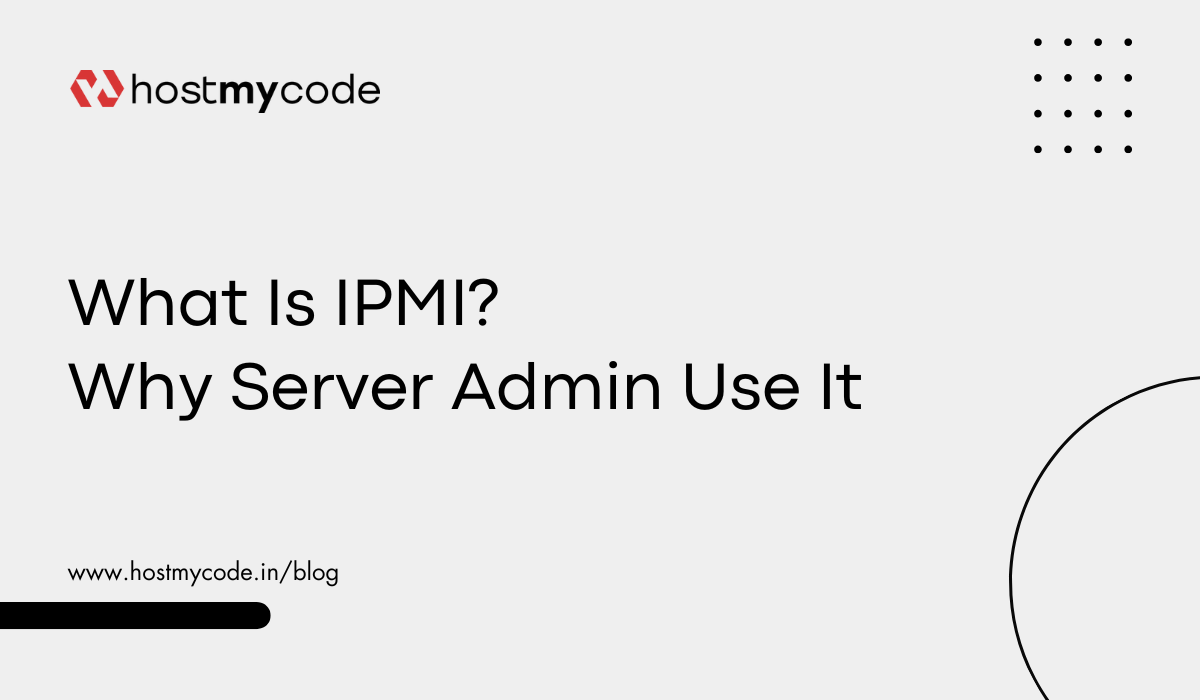In this blog article, we'll explain What is IPMI? Why server admin use it.
In the world of server management, uptime and control matter more than anything. Whether you’re running a data center or managing dedicated servers, being able to monitor and control your hardware remotely is crucial. That’s where IPMI (Intelligent Platform Management Interface) comes in. It’s a standard tool for out-of-band server management — meaning you can control your server even when the operating system is down or the server is powered off.
Understanding IPMI
IPMI is a hardware-level interface that allows administrators to monitor system health, control power, and perform maintenance tasks remotely. It’s built into most modern server motherboards, especially from vendors like Dell, HP, Lenovo, and Supermicro. IPMI operates independently from the operating system, giving direct access to the server hardware via a dedicated management controller, often referred to as BMC (Baseboard Management Controller).
With IPMI, you can:
- Power on, power off, or reboot your server remotely
- Monitor temperature, voltage, and fan speeds
- View hardware logs for troubleshooting
- Access the system console (even before OS boot) through a remote KVM interface
Essentially, it’s like having physical access to your server, no matter where you are.
How IPMI Works
IPMI uses the BMC as a microcontroller that runs separately from the main CPU. The BMC listens on a dedicated network port or shared LAN port, allowing you to access it using a web interface or IPMI tools. Common access methods include:
Web Interface: The simplest method; login through your browser using the server’s IPMI IP address.
Command-Line Tools: Utilities like ipmitool for Linux or Windows can perform advanced operations.
KVM over IP: Provides full remote console access, letting you view BIOS screens, mount ISO files, or reinstall the OS remotely.
Because IPMI operates independently of the operating system, you can troubleshoot servers even when the OS has crashed or is unresponsive.
Why Every Server Admin Should Use IPMI
Full Remote Control
You don’t need to be physically present in the data center. With IPMI, you can reboot, install, or diagnose a server from anywhere in the world.
Faster Issue Resolution
When a server goes down, every second counts. IPMI helps you quickly identify hardware issues, view error logs, and recover the system without waiting for on-site support.
Better Security and Monitoring
IPMI continuously monitors system health metrics like temperature and voltage. Alerts can be configured to warn you before a component fails, helping prevent downtime.
Cost Efficiency
Remote management reduces travel and maintenance costs. A single administrator can manage hundreds of servers efficiently using IPMI-based management tools.
Operating System Independence
IPMI doesn’t rely on any installed software. Even if the OS is corrupted or the storage is inaccessible, IPMI still works.
Best Practices for Using IPMI
Change Default Credentials: Default IPMI logins are a common attack vector. Always create strong, unique passwords.
Use a Dedicated Management Network: Isolate IPMI traffic from the public network using VLANs or private interfaces.
Enable Encryption (HTTPS or SSH): Protect sensitive management sessions.
Keep Firmware Updated: Regularly update the BMC firmware to patch vulnerabilities and improve stability.
Conclusion
IPMI is one of those technologies that quietly make server administration smarter and more reliable. For modern data centers and hosting providers, it’s not optional — it’s essential. By enabling secure, remote, and low-level access to your servers, IPMI helps reduce downtime, streamline management, and improve security.
If you’re managing servers without IPMI, you’re doing it the hard way. Every serious system administrator should take advantage of it — because when things go wrong, IPMI is the difference between a quick recovery and hours of costly downtime.
Checkout our dedicated servers India, Instant KVM VPS, and cPanel Hosting India

